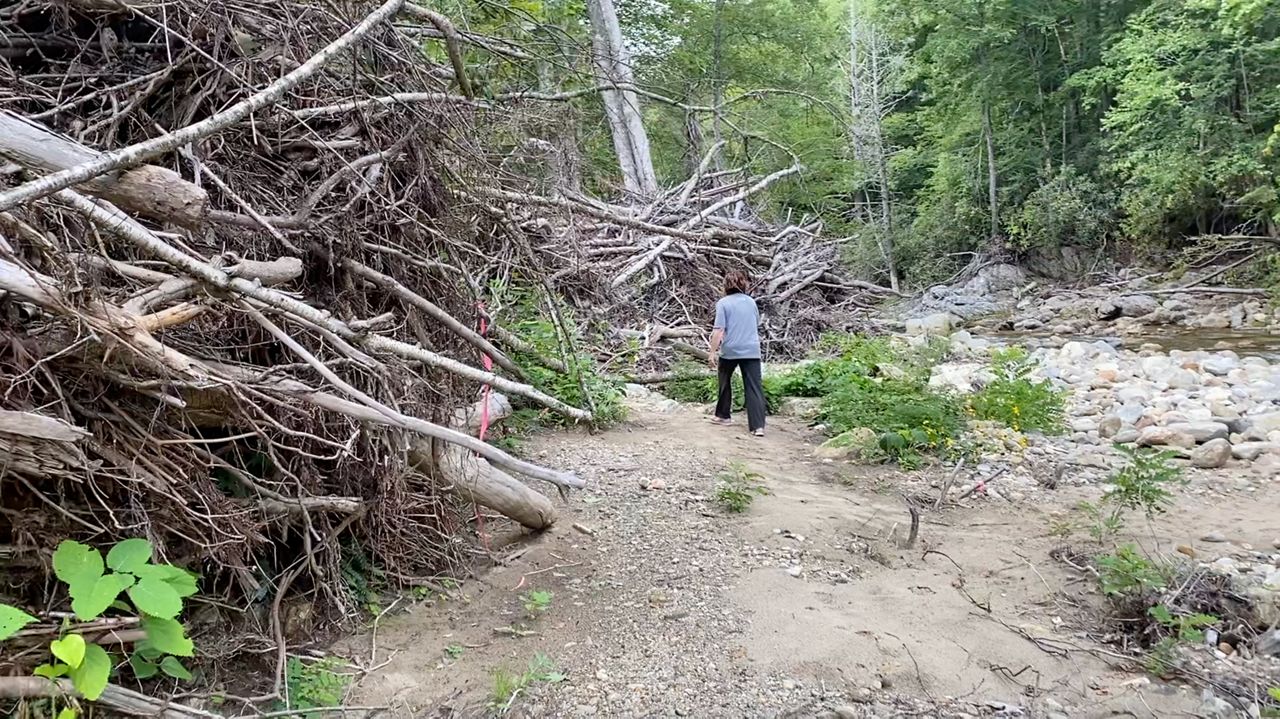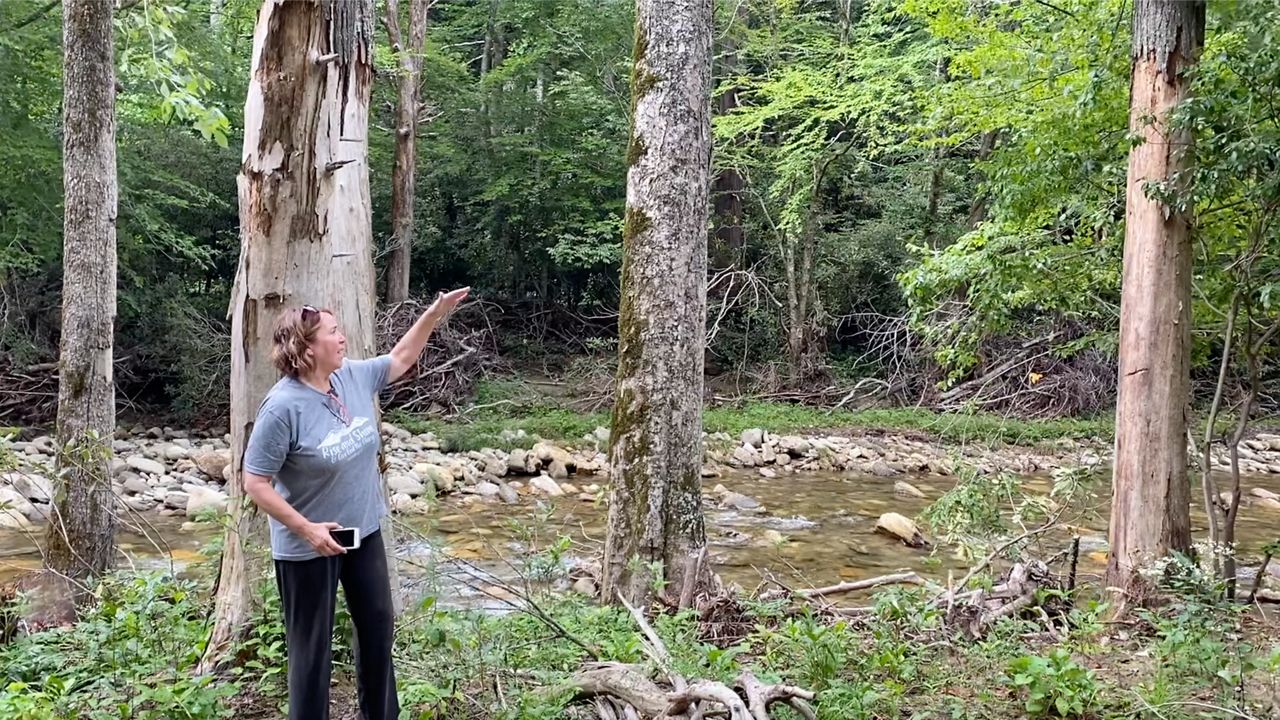HAYWOOD COUNTY, N.C. — One year ago, remnants of Tropical Storm Fred caused deadly flooding in North Carolina’s mountains. Those who were able to return to their homes are still cleaning up the mess it left behind.
- Record rain fell Aug. 17, 2021 in Haywood County, causing the Pigeon River to overflow and flood hundreds of homes
- Six lives were lost and 450 buildings and homes were damaged or destroyed
- Pam Kearse lives along the Pigeon River in Cruso and is still cleaning up from last year’s deadly floods
- Kearse says the flood changed the look and flow of the Pigeon River
Pam Kearse and her family have lived along the Pigeon River in Cruso since the 80s. If you’re patient and quiet enough, you’ll see why their home is a haven for hummingbirds.
“There’s a couple times that they come, in different times during the season, and they’ll swarm in, and I’m having to refill the hummingbird feeders like twice a day,” Kearse said.
Their home on Camp Hope Road is a sanctuary for wildlife, as well as for their family.
“There’s no internet up here, or it’s very spotty, and very poor cell reception. You kind of just step away from everything,” Kearse said.
Last August, they had no choice but to leave the place they love. They evacuated when remnants of Tropical Storm Fred hit, and the emotions are still fresh.
“Driving up 276 through Cruso, just seeing the destruction and hearing at that point how many people were missing, but just to see it and then not knowing what we were coming home to,” Kearse said. “There’s one spot on the road where you can look to see the roof of the house, and we stood there probably 10 or 15 minutes before we had the courage to look to even see if we could see our roof or not.”
Their first floor garage and furnace room had some damage, but overall, their home was spared. However, the Pigeon River alongside their home is now almost unrecognizable.
“What we are concerned with is the river is totally different. It’s channeled different. The river bed has been raised in places because of deposit of all the rocks and things,” Kearse said. “I don’t want it to rain, but I need it to rain to know how the water is going to flow to see then how will it affect my house or the yard or the driveway in the future.”

It’s hard to miss the massive piles of debris that now line the river.
“If this isn’t dealt with, the next flood, or as the waters come up again if it all goes back down stream, it will do the same damage again,” Kearse said. “Is it going to impact some of the bridge work down the road or is it going to impact other structures? What’s going to happen as it starts to move if it’s not cleaned up?”
Cleanup this extensive can feel daunting, so Kearse tries to do what she can when she can.
“Burning the smaller junk stuff and then the bigger stuff try to pile it to where if we can salvage it for either firewood for inside the house or just for campfires,” Kearse said. “It’s always a work in progress, like some logs have been sawed up and some still need to be cut.”
Evidence of the flood is scattered all over their property, including trees along her driveway.

“If you see where the bark is marked off the hemlock trees, that’s the water level from the flood,” Kearse said. “It’s one of those, if I hadn’t seen it with my own eyes and just saw pictures of it I wouldn’t have believed it, and then you don’t appreciate it.”
There are now piles of sand in other parts of their yard. Kearse now fondly describes those patches as a personal beach.
“Complete with flags, chairs, towels, you name it. With the grandkids we talked a lot about how the rain water did the damage, not the river, and we wanted the river to be fun,” Kearse said.
Looking back on videos from the flood, she’s even more thankful to call this place home.
“Living this close to the river, you do have a healthy respect for nature. You have a healthy respect for the river. But I wouldn’t trade it for anything though I love it here,” Kearse said.
Kearse says she has been surrounded by help and support but acknowledges other people feel differently.
“It’s mixed emotions. You’re very thankful for the love and support that we received. Sometimes you’re overwhelmed by the work that is still yet to be done. You’re hopeful because you hear that people have not forgotten us. You’re hopeful because there’s still funding coming into the area,” Kearse said.
Kearse says getting funding for cleanup depends on where debris is located, so it’s taken a while for money to be allocated by the correct agencies to all the people and places that need it.





